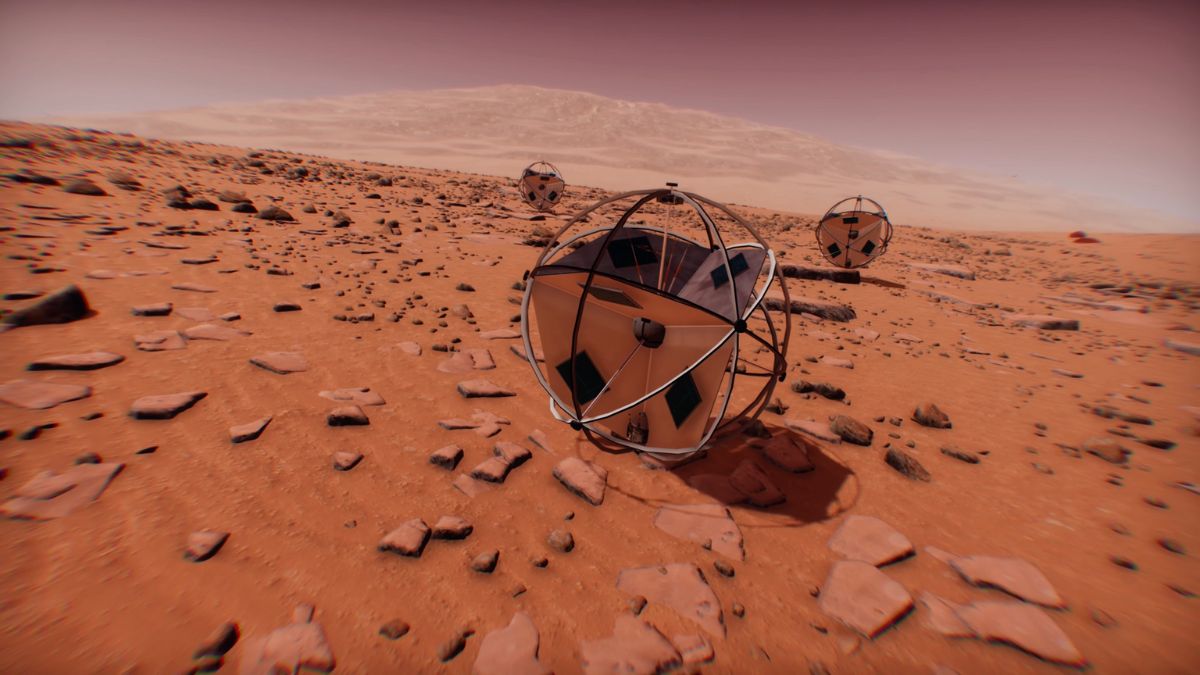Truth & Goodness
4,000 Space Mirrors Could Light Up Earth. Is It Day or Disaster?
04 December 2025

Swarms of spherical, wind-powered robots may soon traverse the surface of Mars. While this sounds like a scene from a science-fiction movie, prototypes of such machines are already operating on Earth. Tumbleweed rovers, inspired by rolling shrubs, could completely transform the exploration of the Red Planet. This marks a new generation of Mars rovers.
A few curved components form the skeletal frame of a five-meter-diameter sphere. Inside, sheets of material catch the wind. This is the design for a new Mars rover, developed by an international team of researchers. The wind-propelled robot is lightweight, simple, and inexpensive to build. Most importantly, it can operate in swarms, gathering data from dozens of locations simultaneously—something previous missions could not achieve.
The latest wind tunnel experiments and field tests in a quarry confirmed that the robots can indeed move and navigate in near-Martian conditions. A wind speed of just 9–10 meters per second is enough to propel them across various surfaces—from sand to fields of boulders.
The device’s name is intentional: Tumbleweeds are spherical plants that move across surfaces when pushed by the wind. While commonly associated with Western movies, the Tumbleweed rovers operate on a similar principle: their spherical structure allows them to roll across the surface with gusts of wind.
The results of the field tests and wind tunnel experiments were recently presented at the EPSC-DPS2025 conference in Helsinki. “We now have experimental proof that Tumbleweed rovers could actually work and collect scientific data on Mars,” stated James Kingsnorth, head of the Team Tumbleweed scientific department. He called the recent tests a turning point in the project’s development.
In July 2025, the team conducted week-long trials at the Planetary Environment Facility at Aarhus University in Denmark. Prototypes, with a diameter of 30–50 centimeters, were tested in a wind tunnel at a low atmospheric pressure of 17 millibars. The results were promising: the robots climbed slopes with an 11.5-degree incline, which corresponds to about 30 degrees in Martian conditions.
Modeling indicates that an average Tumbleweed could travel approximately 422 kilometers in 100 Martian sols (days), moving at an average speed of 0.36 km/h. This distance is greater than any previous Mars rover. For comparison, Perseverance achieves a maximum speed of 0.152 km/h.
The vision is ambitious: a swarm of spherical robots scatters across the surface of the Red Planet. They autonomously gather environmental data, which then flows back to monitoring stations spread across Mars. This cheap, mass-observation system could completely change how we explore other worlds.
Will these spherical robots land on Mars in just a few years? The prototype test results are highly encouraging. Meanwhile, Team Tumbleweed is preparing for further trials. In November, the robots will be tested in a swarm in the Atacama Desert in Chile, verifying their cooperation and coordination. This new generation of Mars rovers is closer than we might think.
Read this article in Polish: Marsjańskie łaziki przypominają krzaki. Poruszają się dzięki wiatrowi